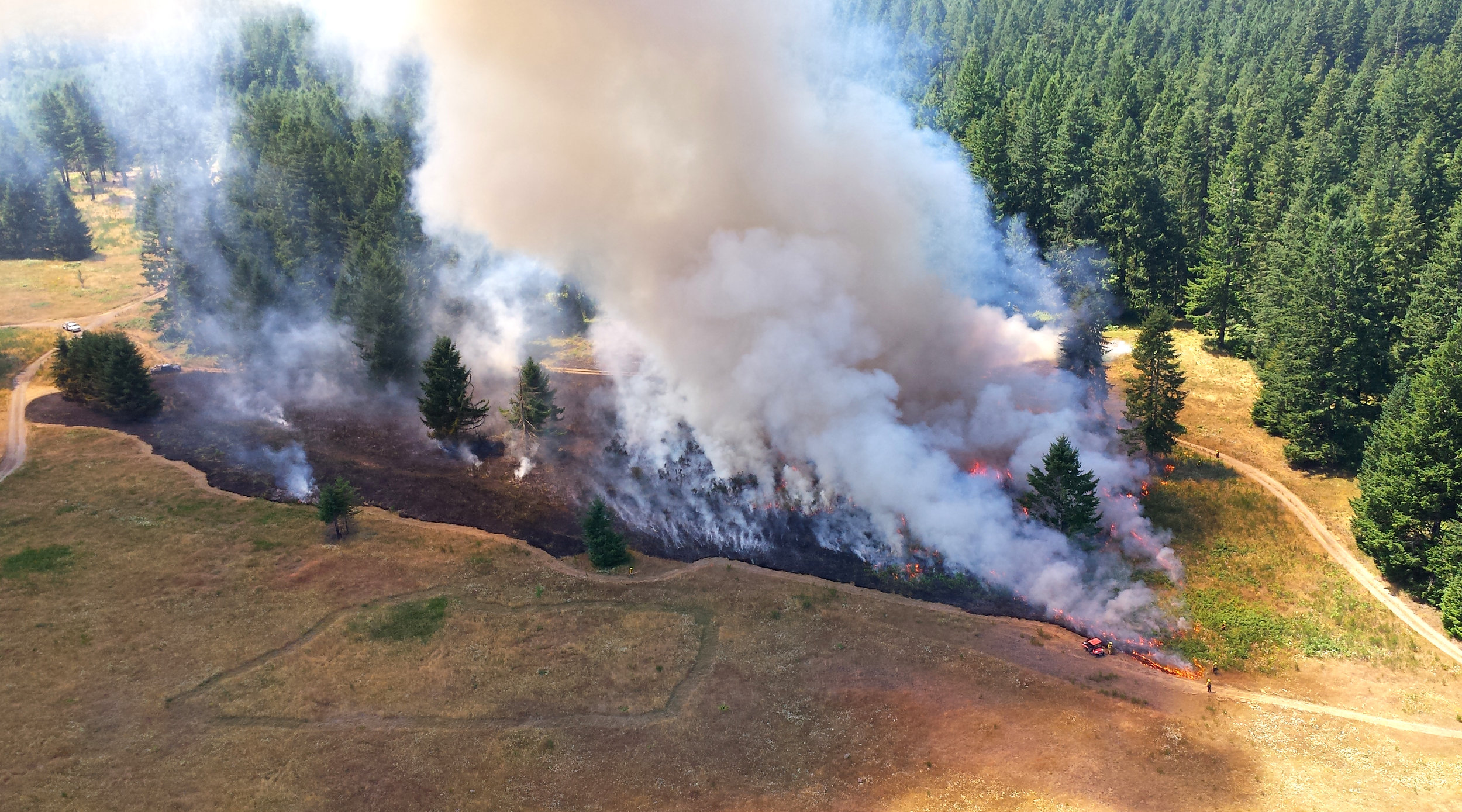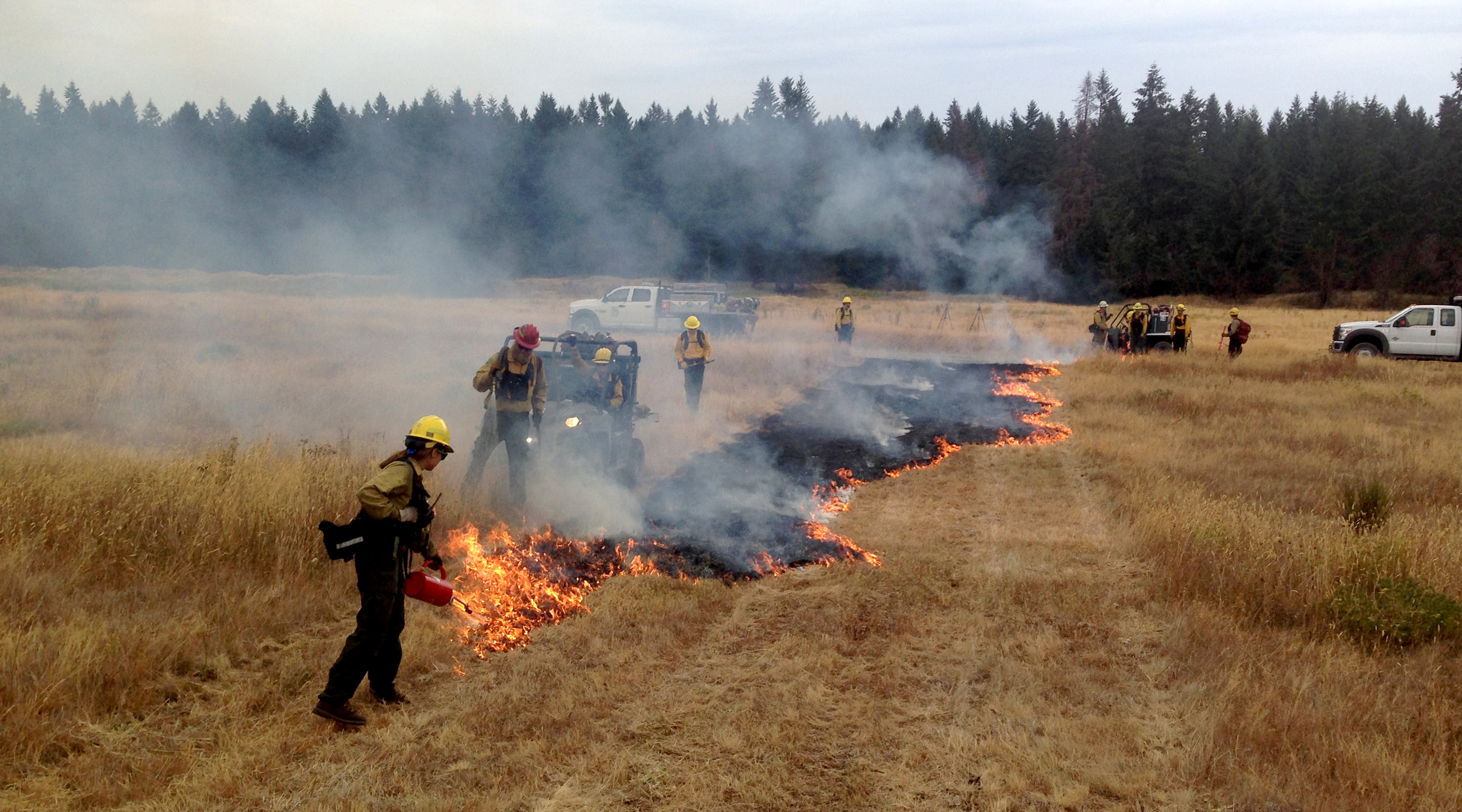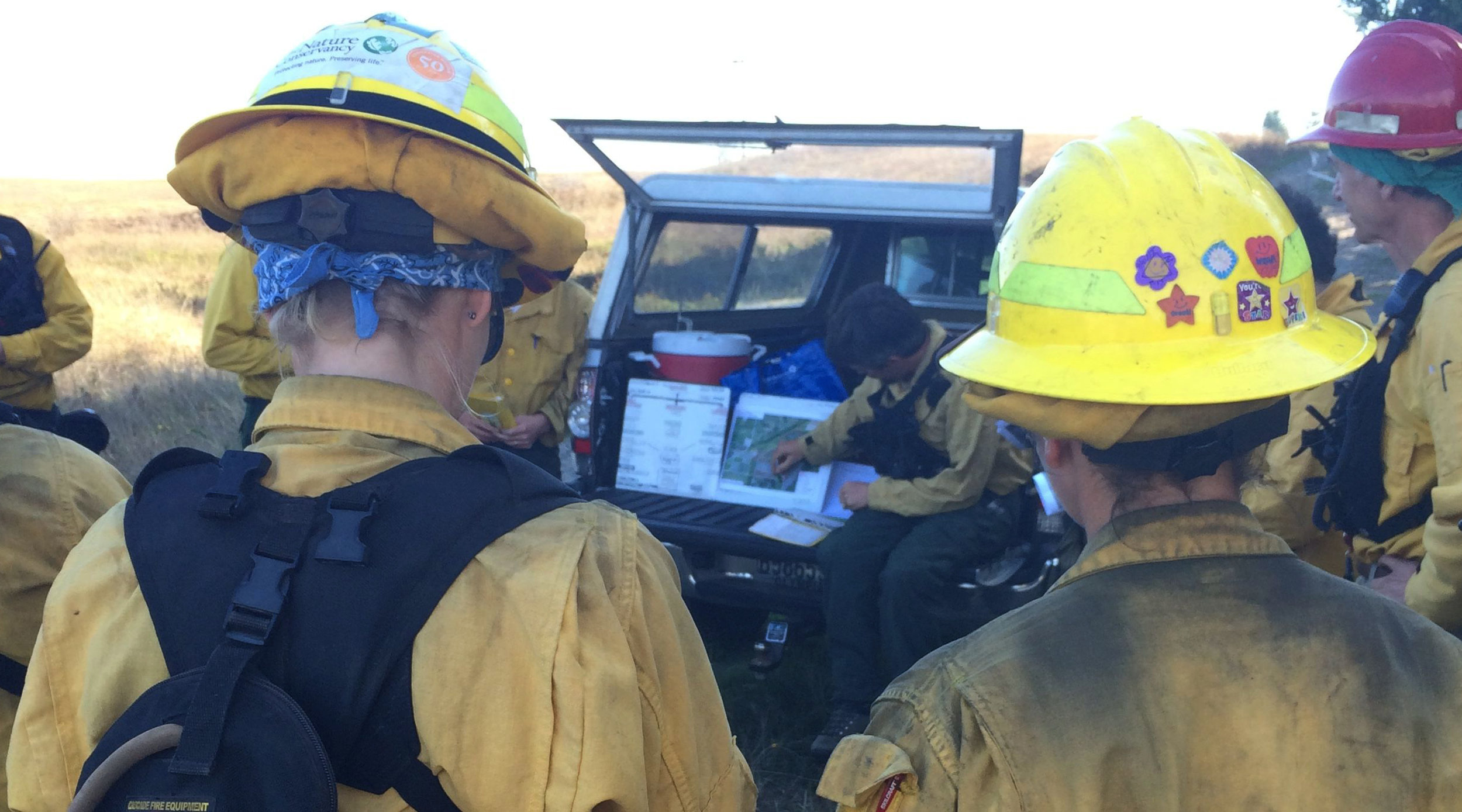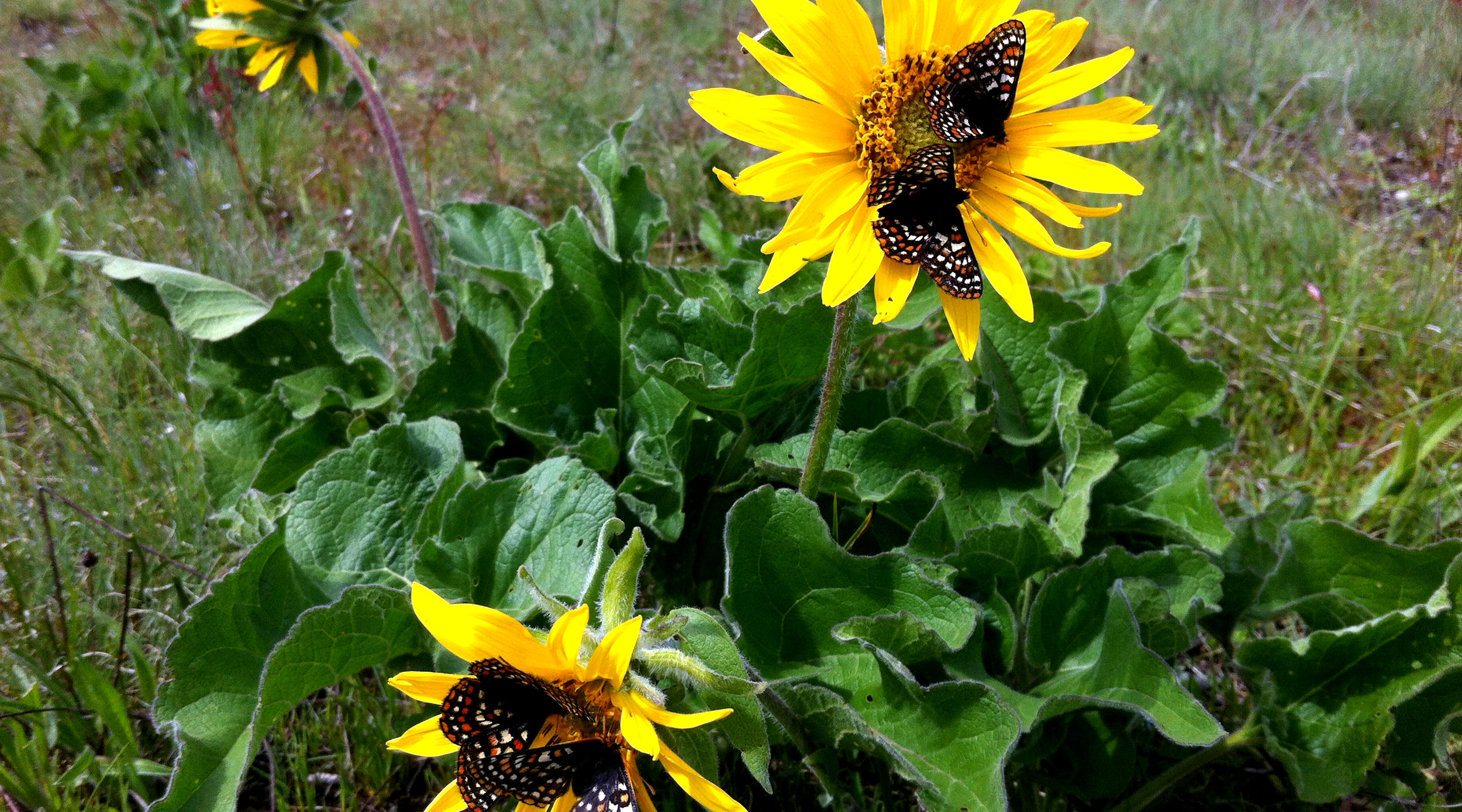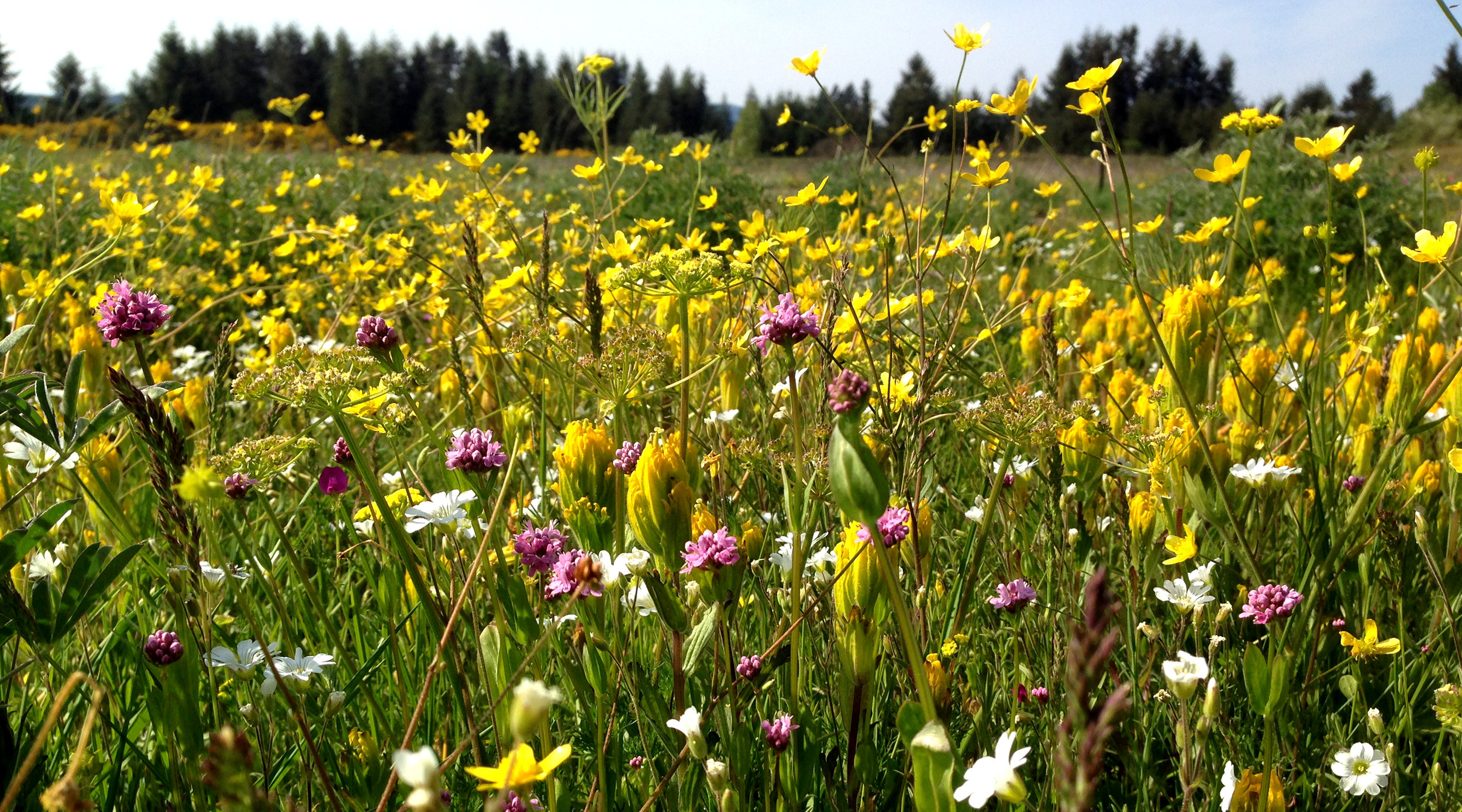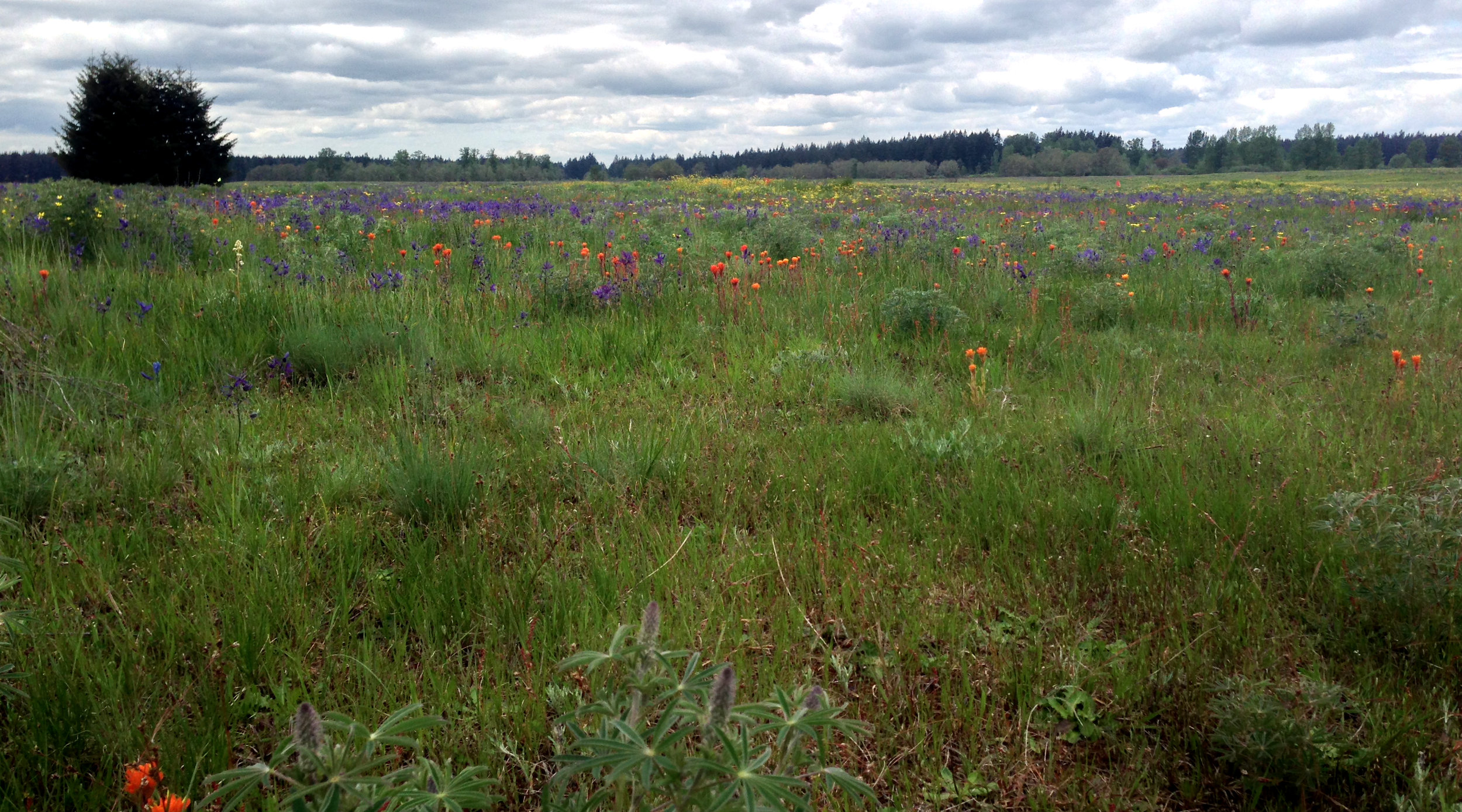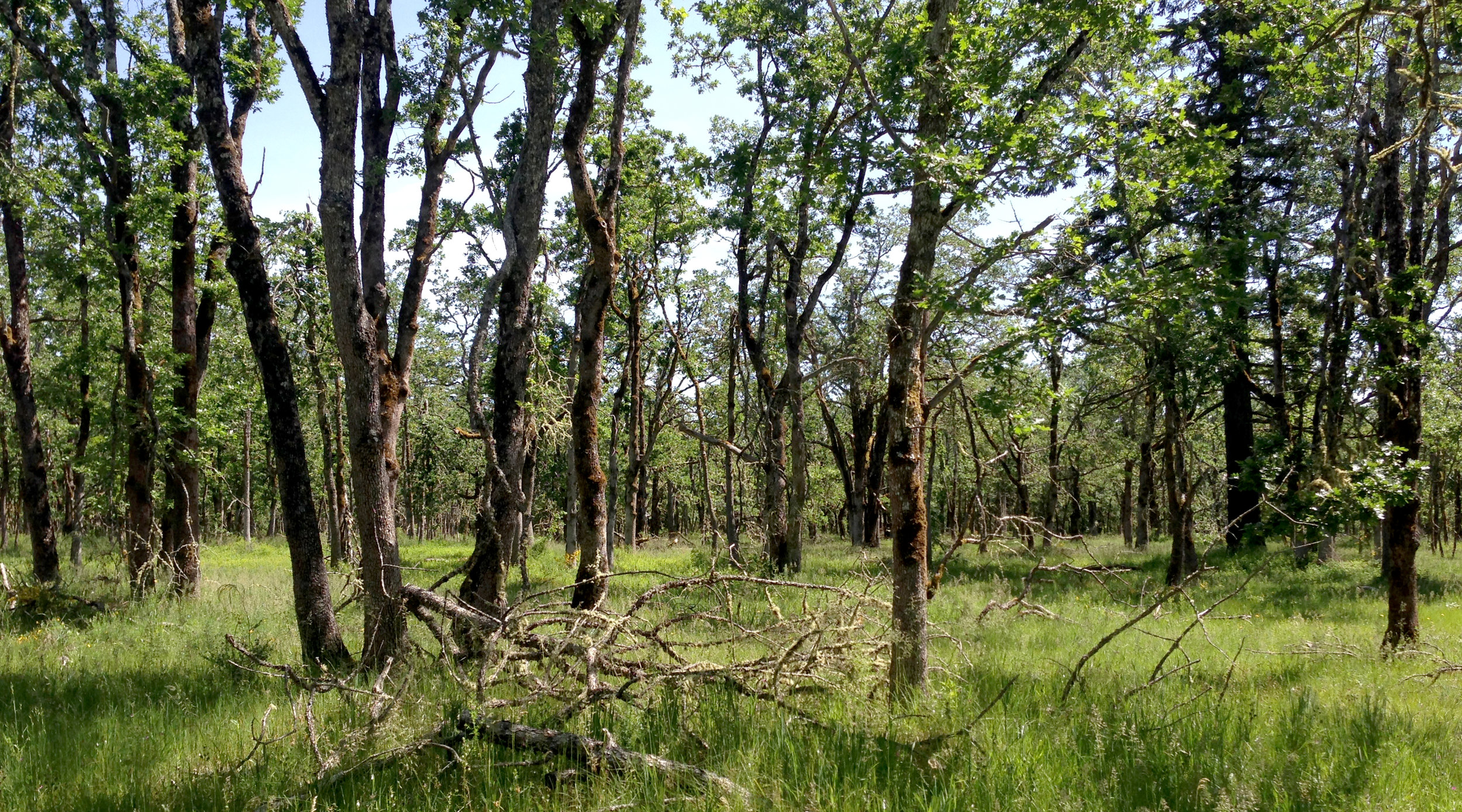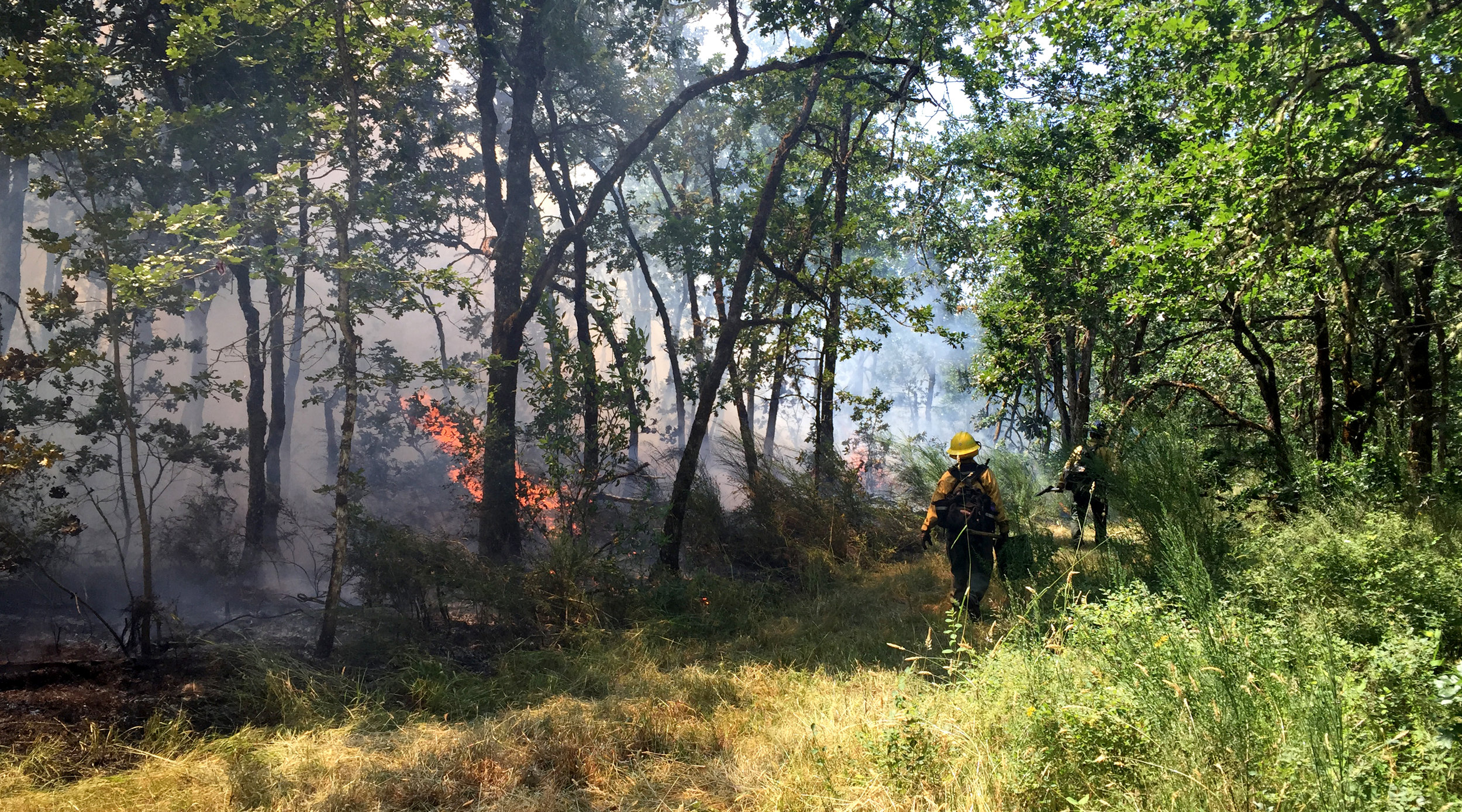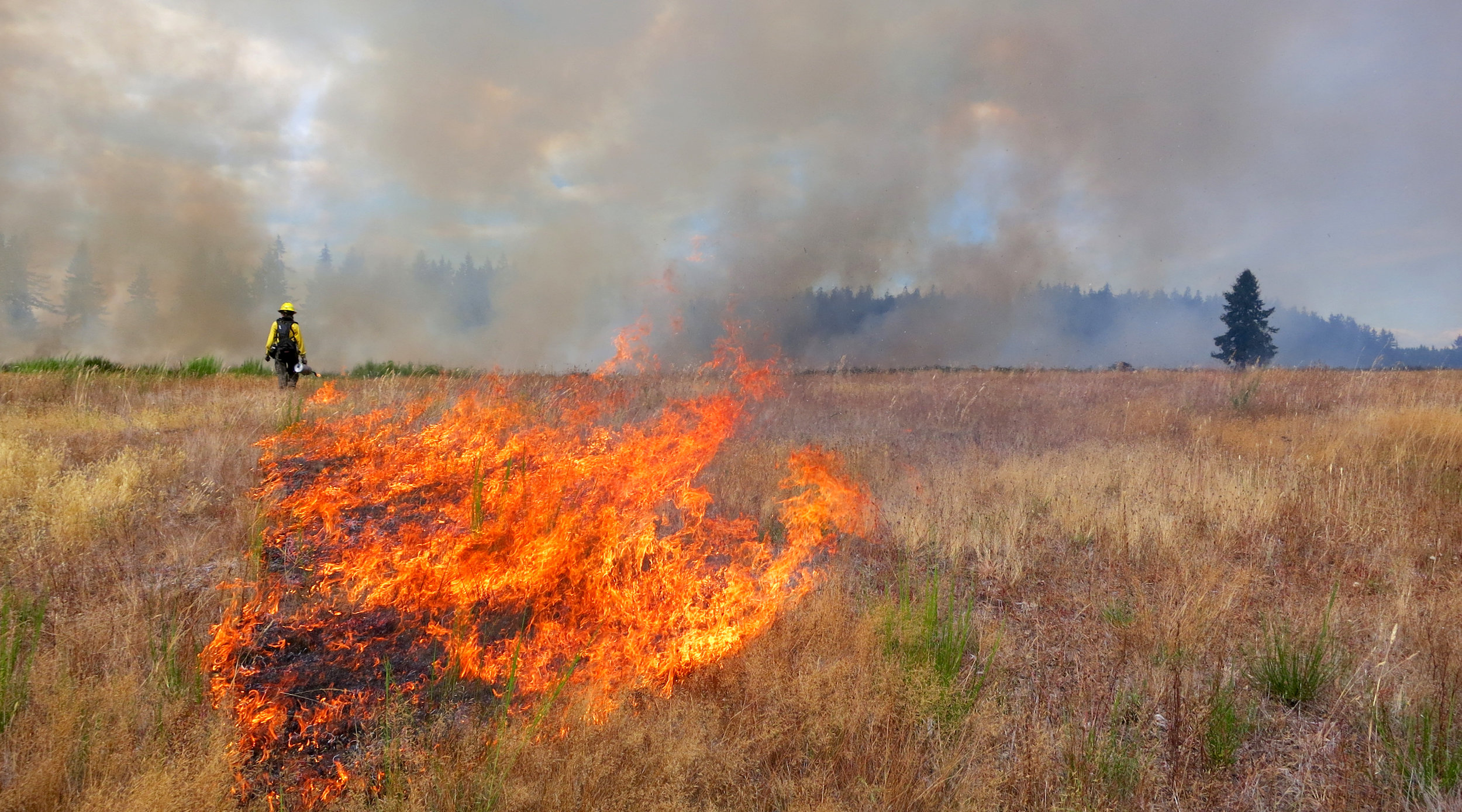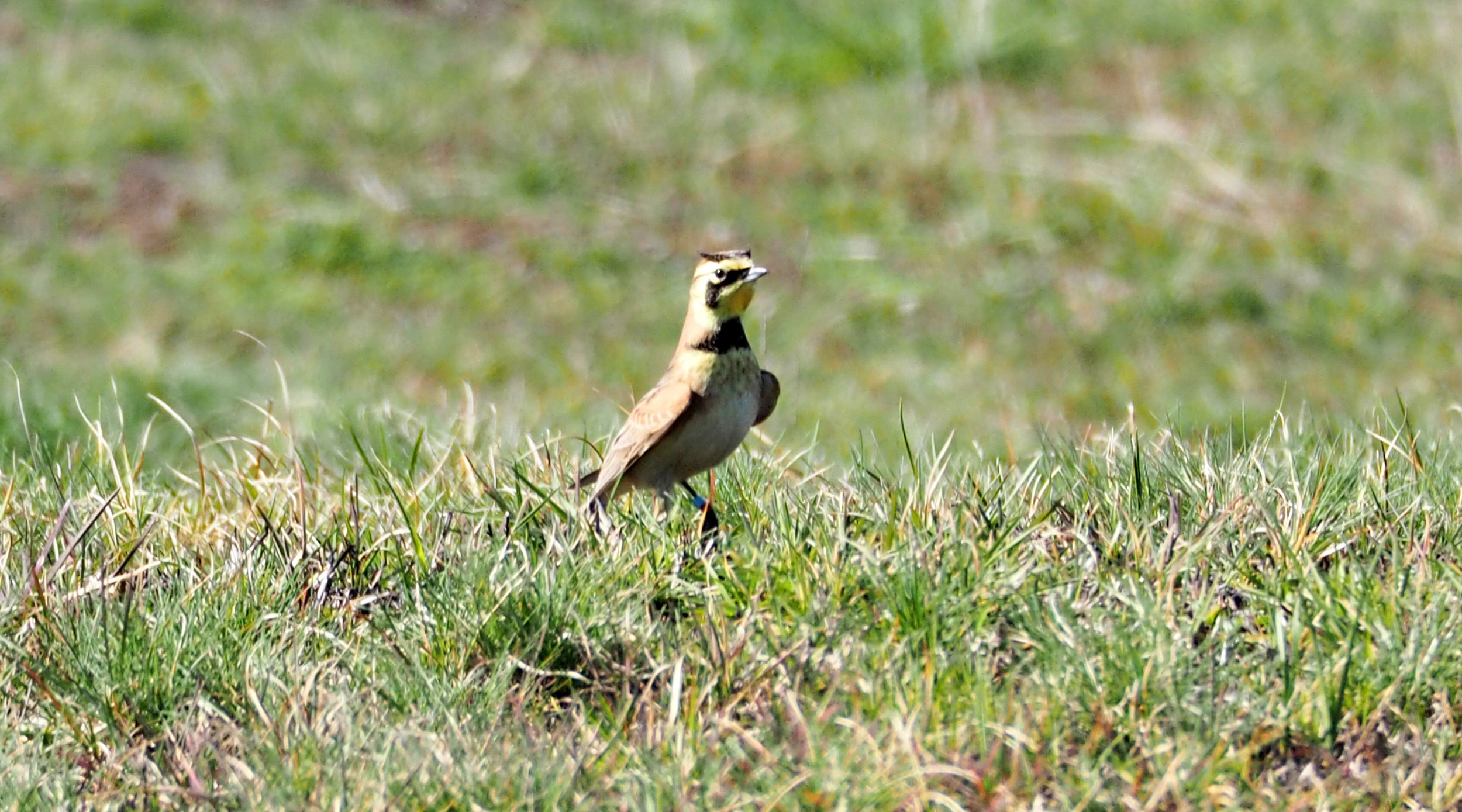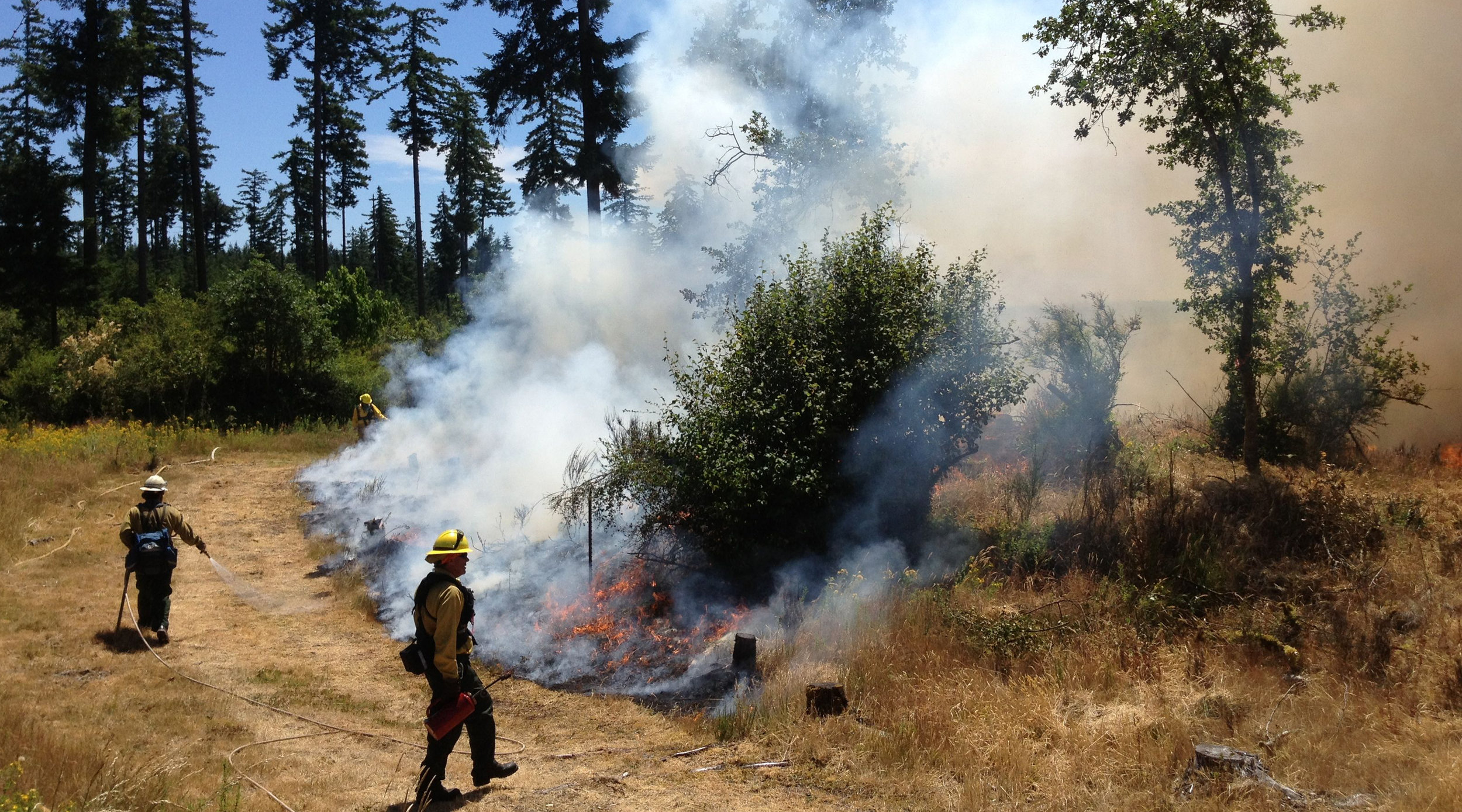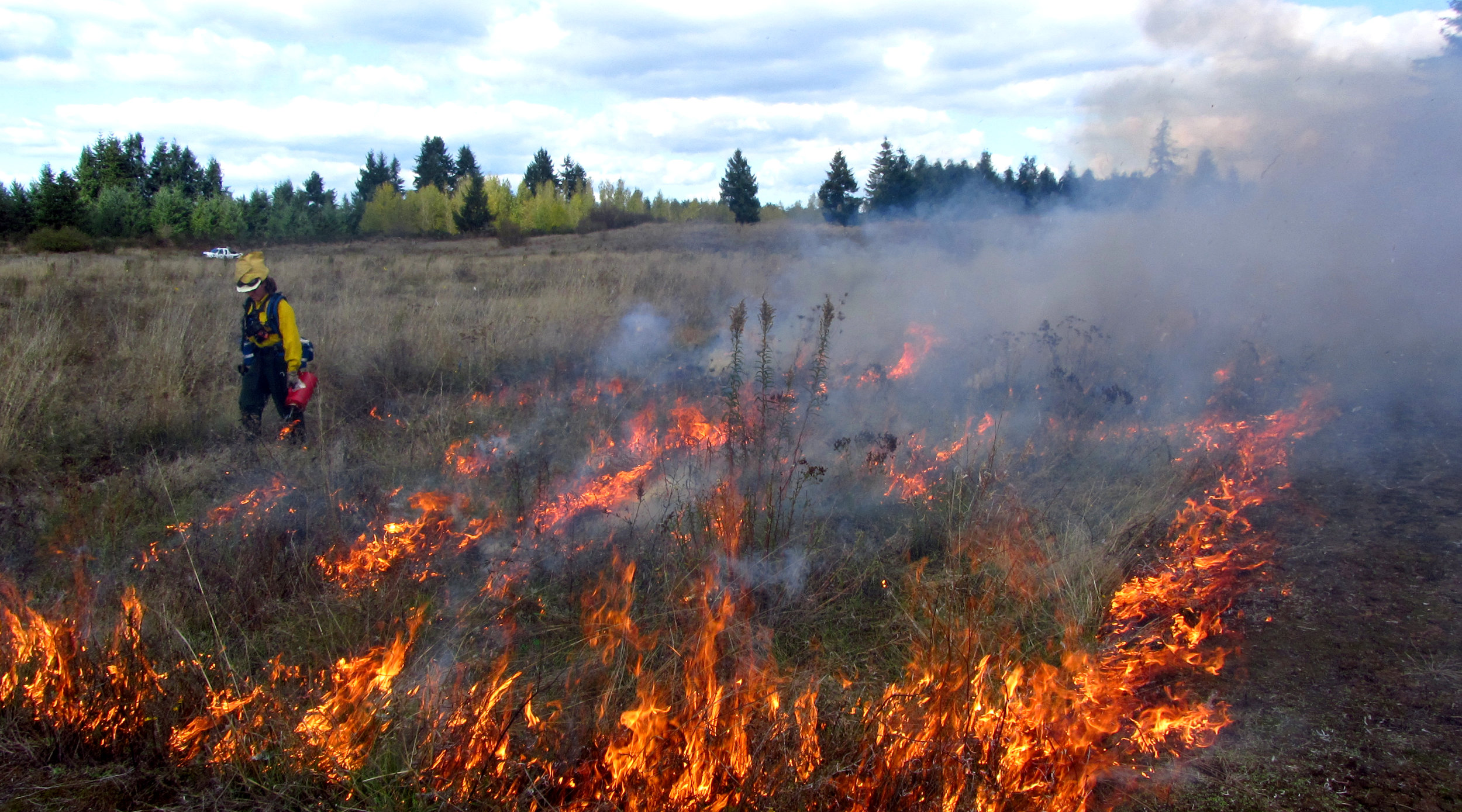Puget Sound Ecological Burn Program
Within sight of the Capitol lies some of the last fragments of lowland prairie and oak woodlands in Western WA. Over the last 10 years, the Puget Sound Ecological Burn Program has brought together land managers and scientists to restore and protect the diverse wildlife and plants that call it home.
Landscape Scale Management
Although it doesn’t look like it today, fire-dependent lowland prairies once dominated the Puget Sound region, interspersed with oak woodlands and conifer forests. Years of habitat fragmentation, encroachment of invasive species, and lack of managed fire has reduced the extent of these ecologically important areas and impacted the wildlife that rely on them, including threatened and endangered species like the Taylor’s checkerspot butterfly and streaked horned lark.
Today, the partners of the Puget Sound Ecological Burn Program and a diverse group of land managers restore these prairies through active ecological management on a large scale in the south Puget Sound region and the San Juan Islands. By connecting and sharing resources over the entire region, the partners overcome challenges and are able to use fire as an essential and necessary tool for restoration.
Prescribed burns take significant planning and coordination. The strong partnerships found in the Puget Sound Ecological Burn Program make ones like this burn on Johnson Prairie possible.
Many of the burners in this collaborative program are trained biologists. This approach ties research and management together to improve knowledge and create better outcomes.
Diverse Collaboration
The Puget Sound Ecological Burn Program is one of the most active prescribed burn programs in the state, burning around 50 to 60 days a year between spring and fall and often with multiple burn crews a day. Success is tied to diverse interests coming together to recognize the strength of collaboration, including multiple agencies, organizations, and landowners.
Land-Managing Partners in the Puget Sound Ecological Burn Program include:
- Center for Natural Lands Management
- Joint Base Lewis McChord
- The Nature Conservancy
- Washington Department of Fish and Wildlife
- Washington Department of Natural Resources
- Wolf Haven International
- Pacific Rim Institute
- Whidbey-Camano Land Trust
Visit South Sound Prairies to learn more.


